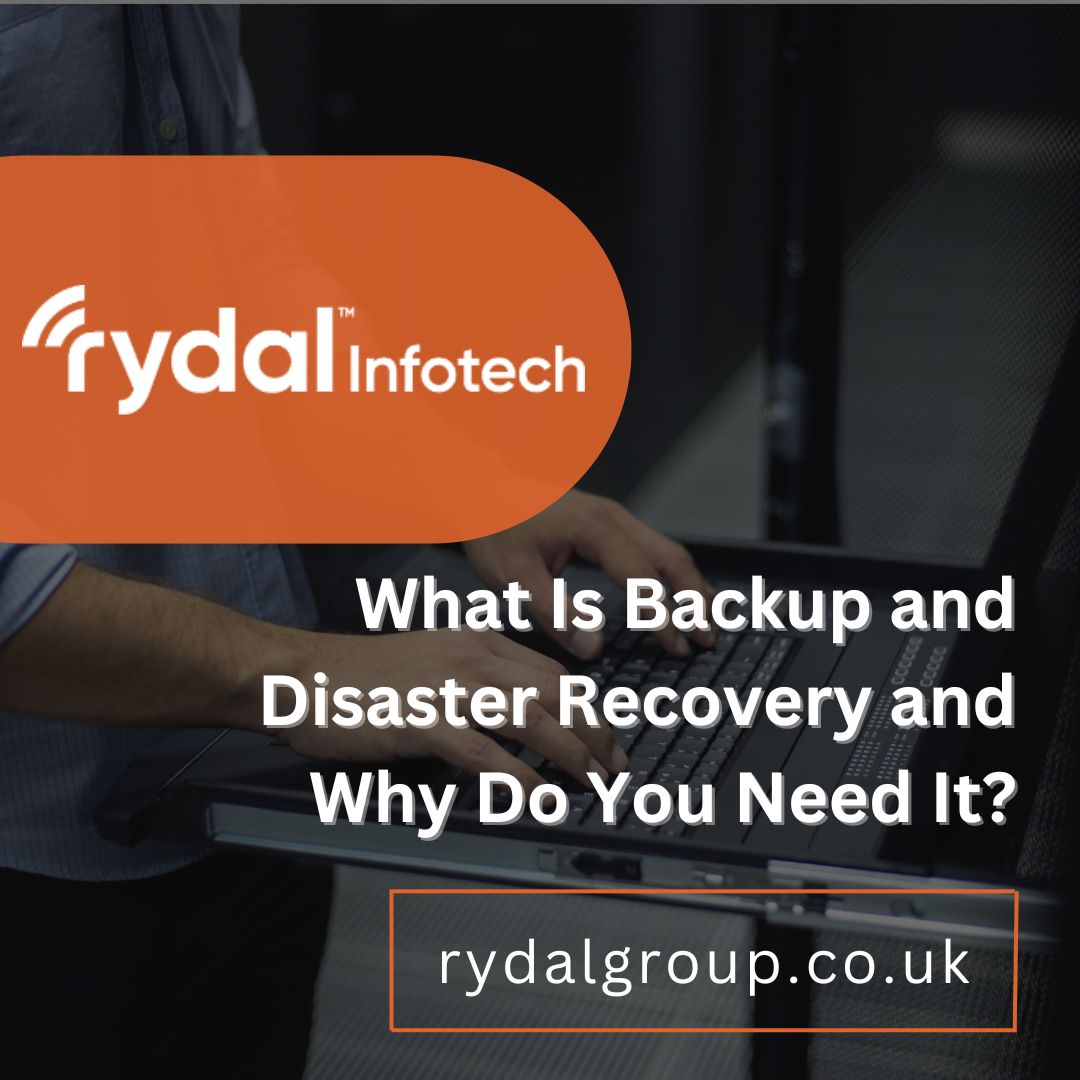Human error can ruin a business transaction but even computers aren’t perfect. They can crash, receive malware, or short out during a natural disaster. In each of those situations, your business risks losing precious files that you need to stay operational. That’s where backup disaster recovery plans come in. With these processes and procedures, you can eliminate the danger of mistakes, fraud, cyber-attacks, or even accidents.
In this blog, we’ll explore the ways you can save your data and recover it so your business can remain operational.
What Is Backup and Disaster Recovery?

These are two processes that allow you to retrieve files when you’ve lost your original data.
Backups create copies of your files which you can store in different devices and locations. You can back up your data yourself or use a service provider to store copies of your data on a remote cloud server.
On the other hand, disaster recovery is the process you’ll go through to restore files you’ve lost/damaged. This process is also useful when comparing new files to older copies to check for fraud.
The Types of Data Backup

Here are the four main types of data backups:
Full
When you do a full backup, you copy all your data. Out of the different types of backups, it takes the most storage space and time to complete. Additionally, if you space out your full backups, you’ll lose more data than if you do more frequent backups. Therefore, it’s safer to do frequent full backups.
Differential
A differential backup starts like a full one by copying all your data. Then, you’ll need to copy new/changed data since the last full backup. Therefore, it takes less time to backup files so you can do it more frequently than a full backup.
Incremental
This type of backup allows you to copy only new/changed data. Since you’re only copying what’s changed since the last backup, it takes even less time than the differential and full backups. Plus, it takes less storage than other backups.
Mirror
With a mirror backup, you’ll copy the latest version of your files. Since it copies all your data, there’s a risk that you’ll also copy issues in that data. For example, if there’s a virus in one of your files, your mirror backup will also have it.
What Is a Disaster Recovery Plan?

A recovery plan is a collection of procedures and policies your business follows to retrieve data. This documentation lists the steps you’ll go through to backup your data, protect it, and eventually retrieve it when needed. It will also outline who’s accountable for backing up data and restoring it and will facilitate training your staff to complete these tasks.
This plan should include:
- Outline of Goals: You’ll need to detail what you aim to back up. These should be the files and applications you require to operate. If you desire, you can also include the rest of your data.
- Personnel: This plan should list the staff in charge of backing up and recovering data. Then, you’ll know the chain of command and who’s accountable.
- Backup Frequency: You should note how often you’ll back up your files. This frequency should balance the minimisation of loss of data and the time and storage you’ll require for the backup.
- Backup Media: You’ll need to mention the storage you’ll use such as flash drives, hard drives, servers, or a service provider.
- Backup Procedure: The plan should guide the relevant personnel to back up your data correctly.
- Backup Location: Your plan should include the location of the backups. At least one of the locations should be different from the original data.
- Backup Encryption: In your plan, you should detail how you’ll secure your backups.
- Recovery Tools: The plan should list the programs and other tools you’ll use to retrieve damaged and lost data.
- Recovery Time Object: You should outline the length of time it should take to recover your files. This timeline should depend on how important the files are to your operations.
- Recovery Procedure: In this plan, there should be steps to recover your data to retrieve specific files and restore an entire system.
- Testing: You should include in your plan how you’ll test the two processes. Then, you’ll use these insights to update your plan.
The Importance of Backup and Disaster Recovery

Your business needs these processes because it helps you in these ways:
Cost Reduction
Having a clear outline of steps and policies to recover damaged or lost files allows your business to avoid costly pauses. In particular, if your business relies heavily on data, a pause in operations could cost you.
Data Loss Prevention
By copying your files and storing them where you can retrieve them in case of a disaster, you’ll prevent some data loss. According to reports, 75% of employees admit to taking files from their business. However, the extent of data you save depends on the frequency of your backups and your testing procedures.
Business Continuity
If your business relies on data to operate, loss of files could cause downtime. This could damage your reputation. Therefore, using backup and disaster recovery will allow you to continue your operations. Moreover, you’ll retain access to business opportunities and will even have a competitive advantage over your competitors who don’t use these processes.
Industry Compliance
These processes may be necessary for your industry. Therefore, these processes allow you to comply with the regulations of your industry.
Conclusion
So, you can use a combination of the main types of backups to securely store your data in a separate location. You can also use your personnel to recover copies of your files or you can use a service provider’s cloud disaster recovery.
When you use these processes, you’ll prevent lost files and the ensuing reduced productivity. Furthermore, you give your business the chance to quickly recover from a disaster and return to operating as usual. Plus, these processes help you comply with industry regulations. Therefore, create a plan to protect your data and recover it efficiently.

